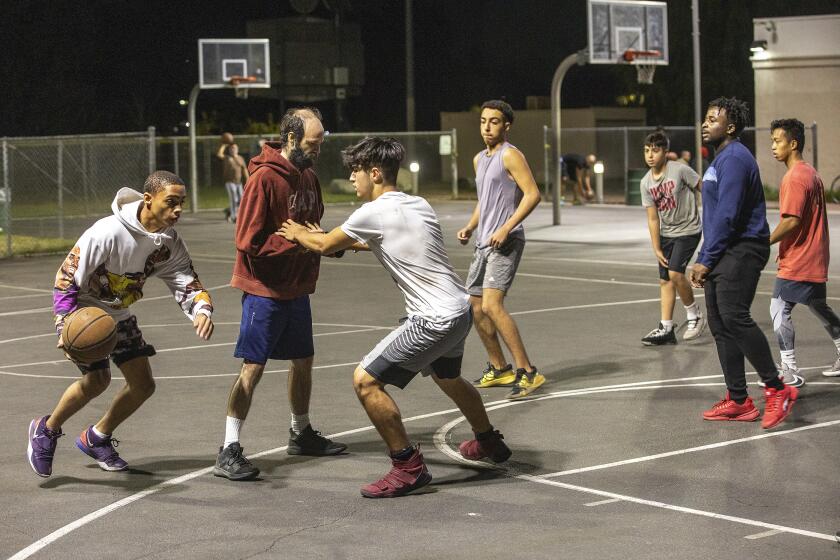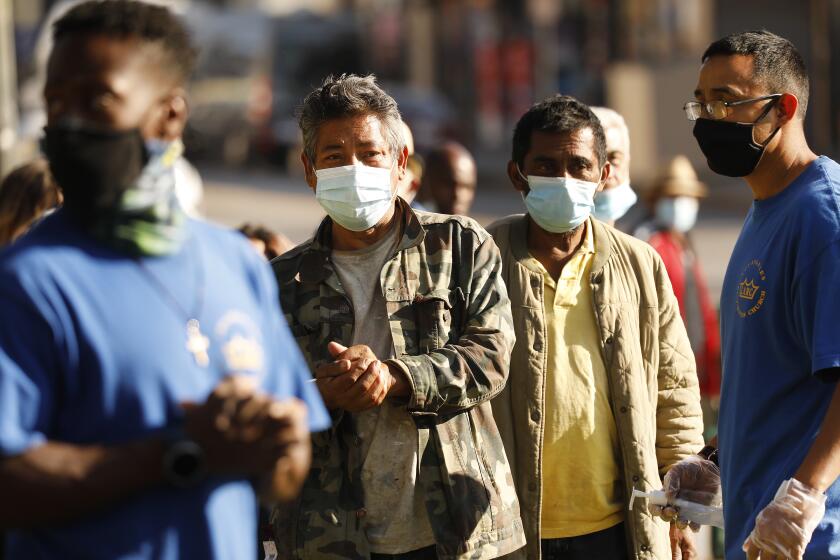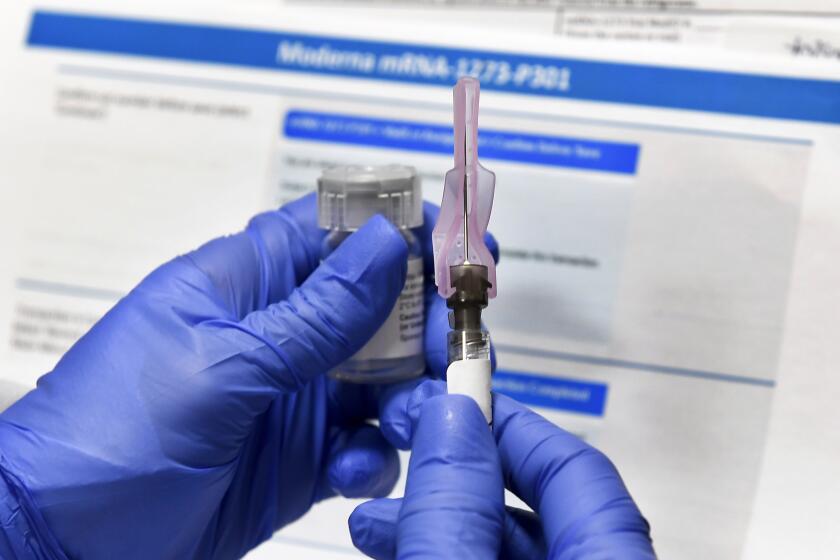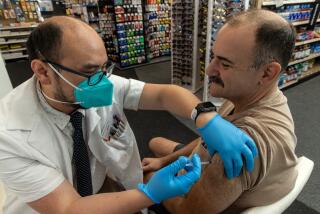Daily California coronavirus cases surpass 13,000 three times this week, a record
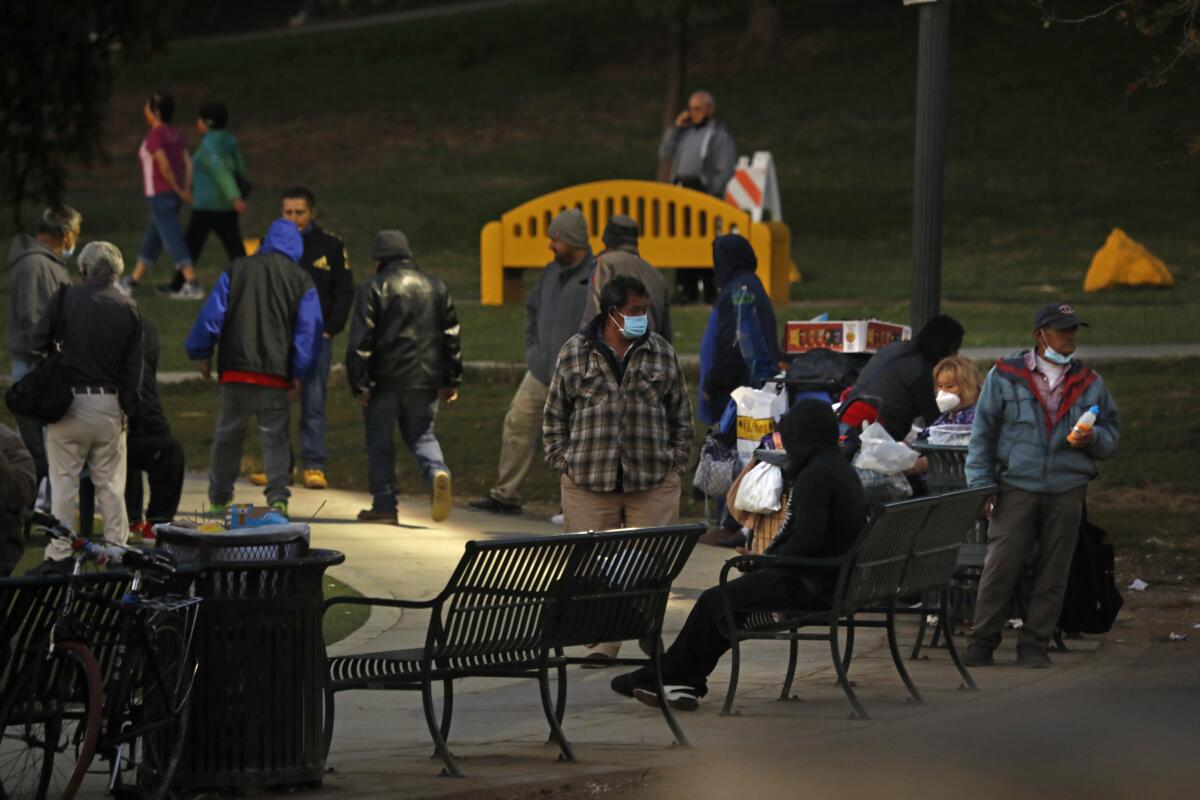
- Share via
The coronavirus continues to spread through California at a record rate, prompting the state to reimpose restrictions not seen since the early days of the pandemic in a bid to beat back the accelerating surge.
The virus is spreading faster than ever in California, and officials are already warning about the risk of running out of hospital beds in a matter of weeks.
There are now so many people infected with the coronavirus that, in a number of ways, the past week has been the worst of any during the pandemic. It potentially foreshadows a heartbreaking death toll as Christmas approaches, with a certain percentage of people infected today dying about a month later.
Statewide, for the first time, California has reported more than 13,000 cases a day three times this week — on Monday, Thursday and Friday, according to The Times’ independent tally.
California broke its latest single-day record on Monday, when 13,412 cases were reported; on Thursday, 13,377 cases were tallied, and 13,113 on Friday. (An earlier version of this story reported a higher tally on Thursday, which was since adjusted downward.)
California is now recording its worst numbers of daily coronavirus infections. For the seven-day period that ended Friday, an average of 10,981 people were reported to become infected daily — a number that has more than doubled in just the last two weeks and is even worse than the peak in the summer, which had been California’s deadliest COVID-19 season. COVID-19 hospitalizations are up more than 60% statewide over the last two weeks.
Los Angeles County has also recorded the highest average daily number of cases so far in the pandemic, with an average of 3,613 people reporting new infections daily over the five-day period that ended Friday. That number has nearly doubled in just two weeks — a sign of how the virus is spreading faster than ever before.
The county recorded 4,158 cases Friday, according to an independent tally by The Times, a pace that places the region of risk at needing to order further restrictions on business operations.
On Thursday, the county reported its largest number of cases in a single day in the history of the pandemic: 4,943.
Hospitalizations continue to climb in the county, rising 65% in the last two weeks. The coronavirus test positivity rate has jumped considerably, from 3.9% at the start of November to 7.1% on Wednesday.
“There’s just a lot more people that are infected,” said Barbara Ferrer, the L.A. County director of public health. “The data looks really bad right now. We’ve had three terrible days in terms of case rates and increases in hospitalizations. And if this does continue, we will in fact be” potentially approaching a point where either outdoor restaurant dining areas are ordered shut or a new stay-at-home order is issued.
Ferrer said she expected to give three days’ notice before a new health order would go into effect.
Daily COVID-19 deaths have also increased in the county. For the seven-day period ended Thursday, an average of 21 people died every day from COVID-19, the worst such tally since Oct. 1, and a 50% increase compared with the number earlier in the week.
“This is a serious concern for all of us,” Ferrer said. “This level of acceleration threatens our healthcare system [and] that threatens care for every single person in this county — for people who have a heart attack, for people who need emergency surgery.”
It’s hard to know whether the county has seen a peak in terms of daily cases or is still on its way to even higher numbers.
But should daily coronavirus case rates worsen and pass a red line established by the county, officials could implement a new stay-at-home order that would generally require people to stay at home as much as possible.
“If we can’t get this back under control, that is, unfortunately, where we’re headed: Trying to limit as much as possible interactions with people not in our households,” Ferrer said.
“I still hope that we don’t have to go to ‘Safer-at-Home’ and that we are able to in the next few days start turning this around,” Ferrer said.
The pandemic conditions are especially worrying now because once coronavirus case rates go up, “it can kind of feed upon itself,” Ferrer said. “Once there are more people that are infected in your community, if everyone doesn’t buckle down and take extra precautions, you now have more people that are capable of spreading [the virus].”
Ferrer again urged the public not to travel for the Thanksgiving holiday, echoing recommendations by the U.S. Centers for Disease Control and Prevention issued Thursday — whether it be a cross-country flight or a drive to the other side of town.
If people decide to travel anyway — such as college students returning home for the next month or two — Ferrer said they should quarantine in a room alone for 14 days; as much as possible not share a bathroom, or clean it every time if they do share one; and have people in the home wear masks at all times when indoors.
If students aren’t able to quarantine for 14 days at their destination, Ferrer suggested they not take part in the Thanksgiving festivities, to reduce the chance of infecting the rest of the household.
“We still urge college students to please not return just for the Thanksgiving holiday,” Ferrer said. “There may be some people that are returning and planning to stay here — they’re not going back to their schools — in which case they have plenty of time to do that 14-day self-quarantine.”
The quarantine is particularly important if people in the home are elderly or have underlying medical conditions that put them at risk for severe illness and death from COVID-19, such as high blood pressure, diabetes, obesity, and kidney or lung disease.
A combination of factors are believed to be fueling the rise in disease, including that people are increasingly gathering, and visiting other people’s homes, while failing to wear face masks and that there has been a greater number of outbreaks at worksites in the last couple of weeks.
Because there are now so many more people contagious with the virus in the community — reflected in the rising test positivity rate, “it’s a lot easier for people to infect other people,” Ferrer said. “Given how high our case rate is ... you have a much greater chance of running into a person who’s infected.”
San Francisco is poised to enter the most restrictive, purple, tier on Sunday, forcing indoor restaurant dining rooms and gyms to close, as is already the case in 93% of California.
California has now recorded five consecutive days with at least 10,000 newly confirmed coronavirus cases a day, a stretch unlike any in the pandemic.
And those skyrocketing case counts aren’t mere numbers on a spreadsheet. Authorities anticipate that roughly 12% of those who test positive will end up in hospitals two to three weeks later. COVID-19 hospitalizations have risen by 63.6% over the last 14 days, hitting 4,523, according to Dr. Mark Ghaly, the state’s health and human services secretary. The number of patients in intensive care — 1,155 — is 40.5% higher than two weeks ago.
Given the current number of daily cases, “that means in two and a half weeks, 1,200 individuals could be hospitalized with COVID,” Ghaly said during a briefing Thursday, and “you can see how that number adds up.”
“It could mean a serious challenge [for] our entire healthcare delivery system, and not just the beds and the buildings, but the staff,” he said.
As cases and hospitalizations rise, officials have said they expect the number of fatalities to climb also. California reported 108 COVID-19 deaths Wednesday — the first triple-digit figure since Oct. 21 — 93 on Thursday, and an additional 90 on Friday, according to data compiled by The Times.
Gov. Gavin Newsom has announced a stay-at-home order affecting most of California.
California has averaged 62 daily deaths over the last week, pushing the state’s overall toll above 18,600.
With the virus becoming more widespread statewide, “activities that you normally do are higher-risk today than they were a month ago,” Ghaly said.
“We’ve seen reports of people saying, ‘Well, I haven’t changed my behavior. I was doing the same thing a month ago,’” he said. “Well, today, because [of] the background transmission rate, the level of COVID in our communities is higher [and] even our everyday activities become higher-risk. And we must be resolved to put up our protective guards even more than we usually do.”
In the face of mushrooming case counts and steadily swelling hospitalizations, officials and experts emphasize that residents should double down on measures that can protect them from infection — including wearing masks in public, practicing good hand hygiene, staying home when sick and keeping physical distance from, as well as avoiding gatherings with, those they don’t live with.
Though officials have repeatedly preached that personal responsibility is vital in the battle against COVID-19, the state this week also unveiled a host of new restrictions aimed at turning back the tide of new infections.
California imposes night curfew as L.A. careens toward new lockdown measures
California announced Thursday it would impose a mandatory overnight stay-at-home order that will prohibit all gatherings with members of other households and all nonessential activities conducted outside of the home from 10 p.m. to 5 a.m. in counties that are in the most restrictive category of the state’s reopening plan.
The limited stay-at-home order still permits people to leave home in the late-night hours to go for a walk with members of their own household, walk the dog, pick up takeout food, or go grocery shopping.
“Oftentimes when people are gathering outside after 10 o’clock, it’s because they’re in a situation where they’re socializing with others, probably not with people in their household,” Ferrer said. “What we’re trying to really reduce right now is the socializing and the gathering with people not in your household.”
The order goes into effect Saturday and lasts through Dec. 21, though it could be extended.
“We hope today’s actions, our collective coming together, our resolve to keep our protective behaviors up, will help us stem the tide and bring these surging numbers down very, very soon,” Ghaly said.
Though the hope is to avoid even more dramatic action in the future, Ghaly acknowledged that “all tools are on the table.”
“COVID can go from 0 to 60 very quickly,” he said. “And it has.”
Restaurants and nonessential stores must close at 10 p.m. and outdoor gatherings are capped at 15 people, as COVID-19 spreads at a rapid rate.
Ahead of the state’s move, officials in Los Angeles County announced additional local efforts aimed at curbing the coronavirus.
On Friday, the county began ordering restaurants and nonessential stores to close to the public from 10 p.m. to 6 a.m. — though they can continue to offer takeout and delivery service during those hours — and capped the number of people allowed at outdoor gatherings at 15, from no more than three households.
The number of patrons at outdoor restaurants, breweries and wineries is capped at 50% of maximum outdoor capacity.
“At this point, no one should still be underestimating the spread of this virus, nor should anyone be questioning the actions we still need to slow the spread and lessen its impact on our collective health and our local economy,” the county health officer, Dr. Muntu Davis, said during a briefing.
Distributing COVID-19 vaccine will be biggest health operation in L.A. history. Can the bureaucracy pull it off?
Davis said the coronavirus conditions should be a clarion call for residents and businesses to redouble their infection prevention efforts.
“If people were really all following the things that needed to be done, we ... probably wouldn’t be in this place where we have this number of cases or have to take these actions,” he said Thursday. “So, really, everybody has to do their part and forget the idea that this is a hoax. It’s not.”
Warning bells are also going off in Santa Clara County, where officials said they are on pace to potentially exceed their hospital capacity in three weeks.
Officials there urged residents not to view testing as a means to gather with those outside their household or engage in other unsafe activities.
“A negative result does not mean someone has a pass to put themselves and others at risk,” Dr. Marty Fenstersheib, the county’s COVID-19 testing officer, said in a statement. “People who test negative can still be carriers of the virus but be in an early stage of infection. It’s critically important that you not travel during this time of heightened COVID-19 risk.”
Times staff writers Phil Willon and Taryn Luna contributed to this report.
More to Read
Sign up for Essential California
The most important California stories and recommendations in your inbox every morning.
You may occasionally receive promotional content from the Los Angeles Times.

